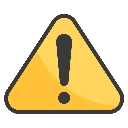

Crutches
▪ Place body weight on crutches
▪ Advance unaffected leg onto the stair
▪ Shift weight from crutches to unaffected leg
▪ Bring crutches and affected leg up to the stair
o Closed-suction drain nursing interventions
▪ Negative-pressure device
▪ Doesn’t require wall suction
▪ *Compress the drain reservoir after emptying (creates negative pressure)
▪ Do not need to put below bed (doesn’t use gravity)
o External fixation device
▪ Surgeon applies the external fixation device directly to the client’s bone to form a
rigid structure around the affected extremity
• Casts, boots, or splints are applied directly to the leg for internal fixation
▪ Client should wear external fixation device continuously for a period of 4-6 weeks
• Nurse should teach the client to perform care of the wound and pin sites at
home
▪ Use crutches with rubber tips
• Prevents the client from slipping and decreases fall risks
▪ Only the provider should adjust the client’s external fixation device in order to
maintain bone alignment
o Long-term mechanical ventilation complications
▪ Decreased cardiac output and hypotension, related to positive pressure from
mechanical ventilation inhibiting blood return to the heart
▪ Fluid retention related to decreased cardiac output
▪ Stress ulcers, related to elevated levels of HCl in the stomach
• Increase risk for systemic infection and require pharmacological treatment
▪ Hyponatremia, secondary to fluid retention
o Postoperative nursing interventions following mastectomy
▪ Instruct client that the drain will remain in place for 1-3 weeks after surgery and will
be removed when there is 25 mL of output or less in a 24-hour period
▪ Instruct client to start exercising the arm on side of surgery 24 hours after surgery
▪ Elevate arm on surgical side on a pillow to promote lymphatic fluid return
▪ Nurse should elevate the head of the client’s bed to at least 30 degrees to promote
drainage from the surgical site and facilitate breathing
o Patient teaching for active tuberculosis
▪ Sputum specimens are necessary every 2-4 weeks until there are three negative
cultures
• After 3 negative cultures, the client is no longer considered infectious
▪ Client’s infection is usually no longer contagious after taking TB medications for 2-3
weeks
▪ Family members do not need to follow airborne precautions because they have
already been exposed to TB
jordancarter 7 months ago
This study guide is clear, well-organized, and covers all the essential topics. The explanations are concise, making complex concepts easier to understand. It could benefit from more practice questions, but overall, it's a great resource for efficient studying. Highly recommend!
| Category | ATI EXAM |
| Comments | 0 |
| Rating | |
| Sales | 0 |
Buy Our Plan

















